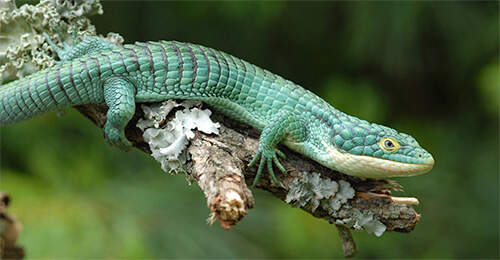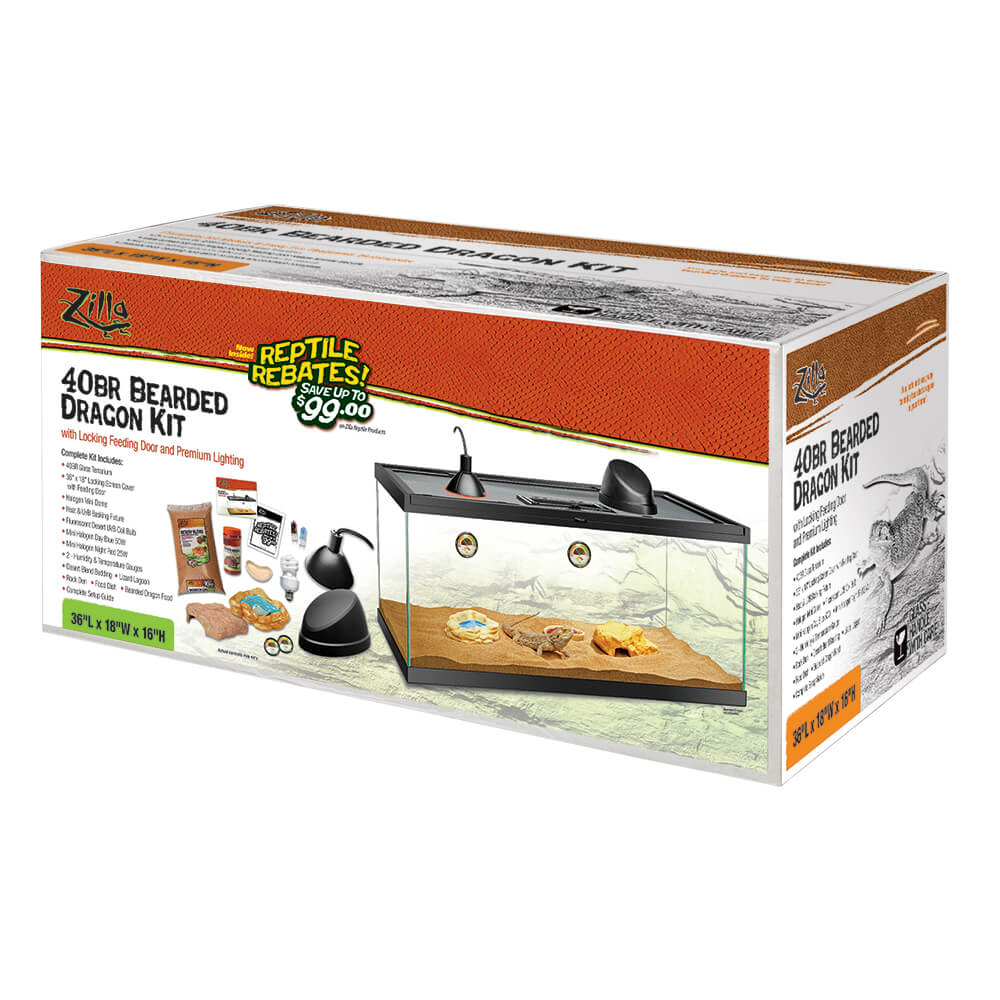Lizard & Gecko Facts
Gecko vs Lizard - Is a Gecko a Lizard?
Getting Started With Your Domestic Lizard
Many lizards main food source are bugs and many of them prefer live, just like in the wild, with that said owners will have to be comfortable and regularly keep up on acquiring their food source. They also need their bedding in their cages changed out every 2-3 months so they stay their healthiest. Depending on the type, many require a humid or bathing for shedding. It's important to research the type of lizard you are planning to get before you get them.
Housing and Habitat
With any pet you should always do your research. When it comes to lizards you will be creating their habitat and therefore it’s very important for you to learn as much about their natural habitat as possible. The Zilla Critter Cages come in various size and can comfortably house many types of lizards. Reference our environment guides to help build the best home for your pet.Lizards & geckos require:
- Heat source to stay warm as well as cool areas in their tanks so the animals can self-regulate their temperatures.
- A temperature gradient, meaning a cool area and a warm area, is important necessity for any animal’s living space and will help keep them healthy.
- UVA/UVB lighting which are essential to maintaining proper healthy scales and bones.
- Decorations that mimic their natural habitats and provide cover for hiding and help with shedding. Snakes will not thrive without proper and adequate décor.
What Do Lizards & Geckos Eat?
For the most part lizards and geckos are insectivorous and omnivorous. Crickets, mealworms, fruit and vegetable matter and the occasional pinky mouse can find their way into a standard lizard diet. Calcium and vitamin D3 supplements should also be added for a healthy meal.
Always wash your hands after handling any reptile!
How To Safely Handle Your Young Pet Lizard or Gecko
Nearly all lizards and Geckos will be nervous when you first get them. They may bark or show and aggressive pose, or they may try to run away from you. Both of these actions are because they are stressed and scared. It is best not to handle them for 5 days after you bring your new pet home. Make sure to handle them gently and don’t hold them too tight. Allow them to move over your hands slowly and hold them closely over a surface in case they fall, to avoid injury. Over time, they will become more accepting of handling and can be amazing animals to hold and interact with.
Should I Get a Lizard or Gecko as a Pet?
Lizards are one of the most diverse groups of reptiles. They can live in trees in the rainforests or underground in the desert. Some eat rodents, some eat insects, and some eat fruit. Many of them have specific needs for heating and UVB lighting and with incorrect husbandry can become sick and die. It is incredibly important to research each species of lizard you are considering keeping as a pet before purchasing one. Make sure the habitat is the ideal size for the lizard, whether it’s a baby or adult, and remember it will grow and may be much larger as an adult. Lizards are intelligent and interactive pets that can bring you and your family a lot of joy, as long as you’re ready to care for them properly.
Types of Lizards That Make Great Pets
Bearded Dragon
Blue Tongued Skink
Fire Skink
Jackson’s Chameleon
Jeweled Lacerta
Mali Uromastyx
Panther Chameleon
Steppe Runner
Veiled Chameleon
Types of Geckos That Make Great Pets
Crested Gecko
Day Geckos
Fat-Tailed Gecko
Gargoyle Gecko
Leopard Gecko
Pictus Gecko
Select a Lizards & Geckos Care Sheet to Download Care Sheets
Getting Started:
Upgraded Deluxe Bearded Dragon Kit
Zilla Bearded Dragon Kits have made the feeding process easier and more secure. The newly designed Screen Cover includes a lockable feeding door which provides quick access into the terrarium, eliminating the hassle of having to remove the entire screen and fixtures. The kits are complete with sleek and modern lighting options including the Zilla Heat/UVB Basking Fixture and Halogen Mini Dome. Two great upgrades, along with bedding, Decor and food, make this a complete starter kit.


